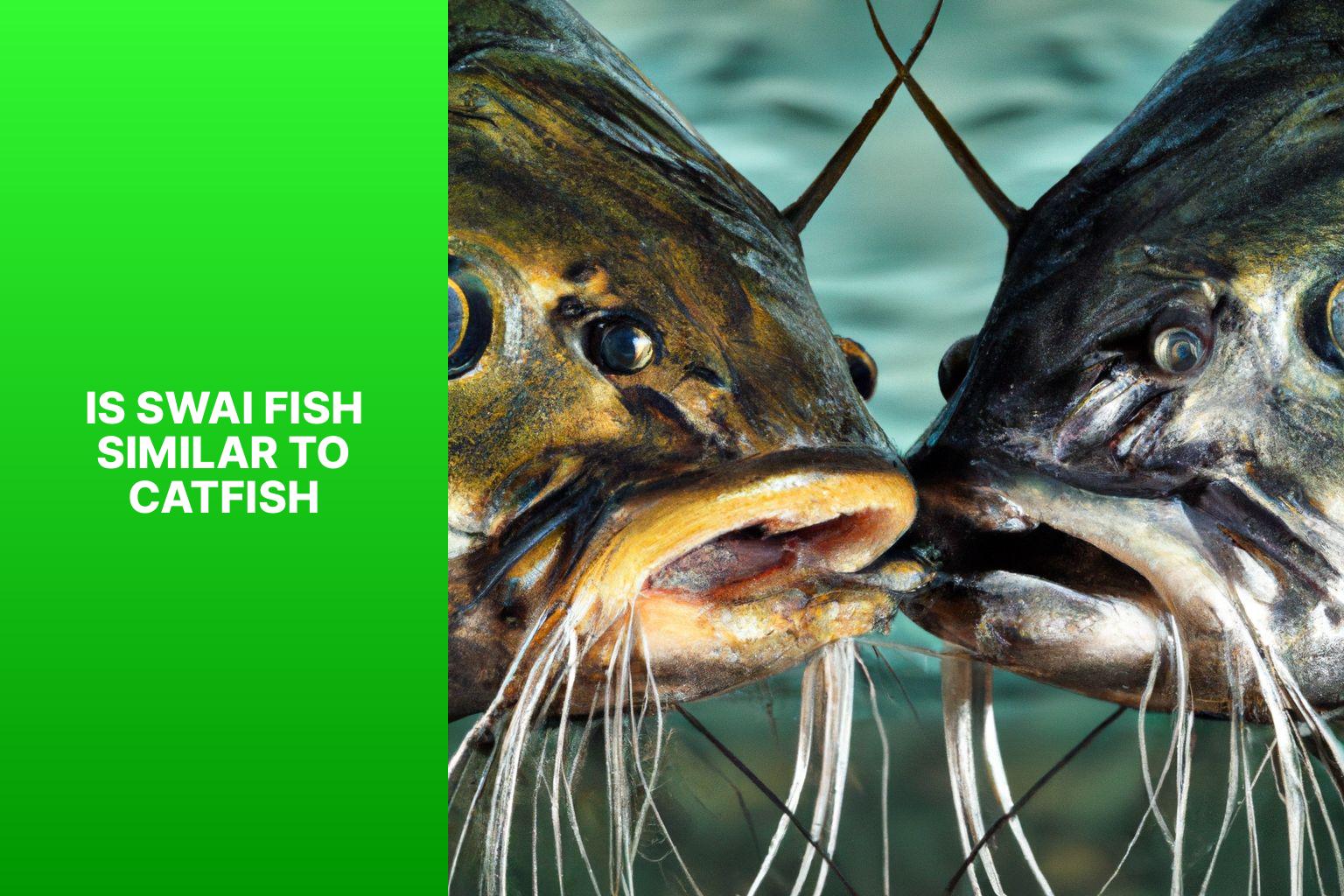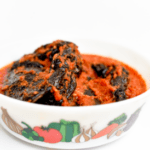Swai fish and catfish are two popular types of fish that are often compared due to their similar appearance and taste. In order to understand the similarities and differences between these two fish, it’s important to first understand what each of them is.
Swai fish, also known as Pangasius, is a type of freshwater fish native to Southeast Asia. It is widely cultivated and is often found in the form of fillets in the market. Catfish, on the other hand, is a broad term used to describe various species of fish that belong to the order Siluriformes. They are found in both freshwater and saltwater environments.
While Swai fish and catfish share some similarities, there are also notable differences between them. In terms of appearance, they both have a similar elongated shape and smooth skin. They also have a mild and somewhat sweet flavor, making them versatile choices for various cooking methods.
However, there are differences in taste and texture between Swai fish and catfish. Swai fish is known for its milder flavor and a slightly firmer texture compared to catfish. Catfish, on the other hand, has a distinct flavor and a more tender and flaky texture.
It’s also important to note that Swai fish is not a type of catfish. While they may share some similarities, they are different species belonging to different families. Swai fish belongs to the Pangasiidae family, while catfish belongs to various families within the order Siluriformes.
When it comes to health considerations, both Swai fish and catfish are lean sources of protein and contain omega-3 fatty acids. However, Swai fish is generally considered to be lower in calories and fat compared to catfish.
In terms of cooking, Swai fish and catfish can be prepared in various ways such as grilling, baking, frying, or steaming. Both types of fish are versatile and can be seasoned and paired with a variety of ingredients and flavors.
Key takeaway:
- Swai fish and catfish are similar: Both swai fish and catfish belong to the same family, and they share many similarities in taste and texture.
- Swai fish and catfish have differences: Although swai fish and catfish are similar, they do have some differences in taste, texture, and appearance.
- Swai fish is not a type of catfish: While swai fish and catfish are similar, they are not the same species. Swai fish belongs to the Pangasius family, while catfish belongs to the Ictaluridae family.
What is Swai Fish?
Swai fish is a type of fish that is often compared to catfish due to their similarities in appearance and taste. The following are key characteristics of Swai fish:
- Scientific Name: Swai fish, also known as Pangasius hypophthalmus, belongs to the Pangasiidae family.
- Origin: Swai fish is native to Southeast Asia, particularly Vietnam, Cambodia, and Thailand.
- Appearance: Swai fish have a similar appearance to catfish, with a slender body and smooth skin. They typically have a light gray or silver color.
- Taste and Texture: Swai fish has a mild and slightly sweet flavor, similar to catfish. Its flesh is tender and flaky.
- Availability: Swai fish is widely available in many countries, including the United States, where it is often imported and sold in supermarkets.
- Uses in Cooking: Swai fish can be prepared in various ways, including baking, grilling, frying, or steaming. It is often used in dishes such as fish tacos, fish fillets, and fish sandwiches.
- Sustainability: There have been concerns about the sustainability and farming practices associated with Swai fish. It is important to consider the source and choose sustainably sourced fish to minimize environmental impact.
While Swai fish shares similarities with catfish, it is important to note that they are different species. Understanding the characteristics of Swai fish can help in making informed choices when it comes to cooking and consuming seafood.
What is Catfish?
Catfish is a type of fish that belongs to the order Siluriformes. It is known for its distinct barbels, which resemble a cat’s whiskers, giving the fish its name. Catfish are found in both freshwater and saltwater environments around the world.
Key characteristics of catfish:
- Barbels: Catfish have long, whisker-like barbels, which are highly sensitive to touch and help them locate food in dark or murky waters.
- Smooth Skin: Their skin is typically smooth and lacks scales. Some species may have bony plates or spines for protection.
- Multiple Species: Catfish encompass a wide range of species, including channel catfish, blue catfish, flathead catfish, and more. Each species has its own unique characteristics and habits.
- Bottom Feeders: Most catfish are bottom feeders, meaning they primarily search for food on the bottom of rivers, lakes, or oceans. They use their barbels to detect prey, such as small fish, insects, crustaceans, and plant matter.
- Diverse Sizes: Catfish can vary in size, ranging from small species measuring a few inches long to large species that can exceed several meters in length.
- Popular for Consumption: Catfish are widely consumed around the world and are known for their mild and versatile flavor. They are often used in various culinary preparations, such as fried catfish, catfish soup, and catfish fillets.
While swai fish may share some similarities with catfish, it is important to note that swai fish (Pangasius hypophthalmus) is a distinct species of freshwater fish native to Southeast Asia. Swai fish, also known as iridescent shark or basa fish, is often marketed as a more affordable alternative to traditional catfish but has its own unique characteristics and taste.
How Are Swai Fish and Catfish Similar?
| How Are Swai Fish and Catfish Similar? | |
| 1. Origin | Swai Fish and Catfish both originate from Southeast Asia and North America, respectively. |
| 2. Appearance | Both Swai Fish and Catfish have a similar physical appearance with a sleek, elongated body and smooth, scaleless skin. |
| 3. Taste | Swai Fish and Catfish share a mild and delicate flavor, making them versatile for various cooking styles and flavor pairings. |
| 4. Texture | Swai Fish and Catfish have a tender and slightly firm texture, which holds up well in different cooking methods such as grilling, frying, or baking. |
| 5. Nutritional Value | Both Swai Fish and Catfish are low in fat and calories while being a good source of high-quality protein and essential nutrients like omega-3 fatty acids. |
Swai Fish and Catfish share similarities in origin, appearance, taste, texture, and nutritional value. They are both enjoyable options for those looking for a mild and versatile fish to cook.
How Are Swai Fish and Catfish Different?
Swai Fish and Catfish are two distinct types of fish with notable differences. Here is a breakdown of how they differ:
| Swai Fish | Catfish |
| Swai fish belongs to the Pangasius family. | Catfish belongs to the Siluridae family. |
| Swai fish has a milder flavor compared to catfish. | Catfish has a stronger, more distinctive flavor. |
| Swai fish has a tender and flaky texture. | Catfish has a firmer and denser texture. |
| Swai fish is typically white or pale in color. | Catfish can have a darker flesh color. |
| Swai fish is primarily sourced from Southeast Asia. | Catfish is found in freshwater rivers and lakes worldwide. |
| Swai fish is often imported and considered an affordable option. | Catfish is commonly available and widely consumed in the United States. |
Despite these differences, both Swai fish and Catfish are popular choices for various seafood dishes due to their versatility and unique characteristics.
Fact: Did you know that catfish is a common ingredient in Southern cuisine, often used in dishes like fried catfish and catfish po’ boys?
Is Swai Fish a Type of Catfish?
Yes, Swai fish is a type of catfish. While Swai fish is not the same as the commonly known North American catfish species, it is categorized under the broader classification of catfish.
Here are some key points to understand about the relationship between Swai fish and catfish:
- Scientific Classification: Swai fish belongs to the Pangasiidae family, which is a family of catfish. It is scientifically known as Pangasius hypophthalmus.
- Physical Similarities: Swai fish shares some physical similarities with other catfish species. It has a similar elongated body shape, whisker-like barbels around its mouth, and a smooth skin texture.
- Origin: Swai fish is native to Southeast Asia, particularly the Mekong River and surrounding regions. Its natural habitat and distribution differ from those of North American catfish.
- Culinary Use: Swai fish is often marketed as an affordable alternative to other types of white fish, including catfish. It has a mild flavor and a delicate, flaky texture, making it suitable for various cooking methods.
- Regulatory Considerations: It is important to note that the labeling and marketing of Swai fish as “catfish” can vary depending on regional regulations. In some countries, such as the United States, only certain species of North American catfish can be labeled as “catfish” for commercial purposes.
While Swai fish is a type of catfish, it is distinct from the North American catfish species that may be more commonly known. Understanding the specific characteristics and origin of Swai fish can help consumers make informed decisions when purchasing and preparing seafood.
What Are the Similarities in Taste and Texture Between Swai Fish and Catfish?
Swai fish and catfish have several similarities in taste and texture:
- Mild Flavor: Both swai fish and catfish have a mild, subtle flavor. They are not overly fishy, making them appealing to individuals who prefer milder seafood options.
- Moist and Tender: Both types of fish have a moist and tender flesh. When properly cooked, they retain their juiciness, making them enjoyable to eat.
- White Flesh: Swai fish and catfish have white flesh, which cooks up to a light, delicate color. This makes them visually appealing and versatile for various culinary preparations.
- Similar Texture: The texture of swai fish and catfish is comparable. They both have a slightly firm texture, but the flesh is still tender and flakes easily when cooked.
- Versatile Cooking Options: Swai fish and catfish can be cooked using various methods such as baking, grilling, frying, or broiling. They can be used in a wide range of dishes, from fish tacos to fish stews.
While swai fish and catfish share these similarities, it’s worth noting that there may be slight differences in flavor and texture based on the specific species, farming practices, and preparation methods. If you enjoy the taste and texture of catfish, you are likely to find swai fish to be a comparable alternative.
What Are the Differences in Taste and Texture Between Swai Fish and Catfish?
While Swai fish and Catfish may appear similar, there are notable differences in taste and texture:
- Taste: Swai fish has a milder and less distinct flavor compared to Catfish. It has a subtle sweetness and a delicate taste that some describe as similar to a combination of other white fish like Sole or Flounder. Catfish, on the other hand, has a stronger, earthier flavor that some describe as slightly muddy or gamey.
- Texture: Swai fish has a tender and flaky texture. Its flesh is relatively soft and easily breaks apart. In contrast, Catfish has a firmer texture with a slightly meatier bite. It holds together well when cooked and has a more substantial mouthfeel.
- Appearance: Swai fish and Catfish can look similar, but they have slight differences in appearance. Swai fish typically has a lighter color, ranging from white to light pinkish-gray, while Catfish tends to have a more grayish or brownish hue.
- Cooking Methods: Due to its delicate texture, Swai fish is well-suited for baking, grilling, or pan-frying. It absorbs flavors easily and pairs well with various seasonings and sauces. Catfish is often breaded and deep-fried, as its firmer texture holds up better to this cooking method. It is also commonly used in stews and soups.
- Availability: Swai fish is typically imported from Southeast Asia, particularly Vietnam. It is widely available in many supermarkets and seafood markets. Catfish, on the other hand, is more commonly found in North America, especially in the southern states, where it is a popular staple.
While both Swai fish and Catfish are white fish with some similarities, they differ in taste, texture, and preferred cooking methods. Understanding these differences can help you choose the fish that best suits your culinary preferences and recipe requirements.
Is Swai Fish Healthier Than Catfish?
When comparing the health benefits of Swai fish and catfish, here are some factors to consider:
- Omega-3 Fatty Acids: Both Swai fish and catfish contain omega-3 fatty acids, which are beneficial for heart health and brain function. The omega-3 content can vary depending on the diet and habitat of the fish.
- Mercury Levels: Swai fish and catfish are generally considered to have low mercury levels compared to other types of fish. This makes them safe for regular consumption, especially for pregnant women and young children.
- Protein Content: Both Swai fish and catfish are good sources of protein, which is essential for muscle growth and repair. The protein content is similar in both types of fish.
- Calorie and Fat Content: Swai fish and catfish are relatively low in calories and fat, making them suitable choices for individuals watching their calorie intake or following a low-fat diet.
- Texture and Taste: Swai fish has a milder and less fishy taste compared to catfish. It also has a tender, flaky texture, which some people prefer.
- Sustainability: When it comes to sustainability, it is important to consider the source of the fish. Look for Swai fish and catfish that are sourced from sustainable fisheries to ensure the long-term health of the fish populations and the environment.
Ultimately, the healthiness of Swai fish compared to catfish depends on personal preferences and dietary needs. Both types of fish can be part of a healthy diet as long as they are sourced responsibly and prepared in a healthy manner.
How to Cook Swai Fish and Catfish?
Here are some cooking methods and tips for preparing Swai fish and catfish:
- Baking: Preheat the oven to 375°F (190°C). Place the fish fillets on a greased baking sheet and season with salt, pepper, and your choice of herbs or spices. Bake for 15-20 minutes or until the fish is cooked through and flakes easily with a fork.
- Frying: Heat oil in a frying pan or deep fryer to around 350°F (175°C). Dip the fish fillets in a mixture of flour, salt, and spices, then carefully place them in the hot oil. Fry for 4-5 minutes on each side or until golden brown and crispy. Drain on paper towels to remove excess oil.
- Grilling: Preheat the grill to medium-high heat. Season the fish fillets with salt, pepper, and your preferred seasoning. Brush the grill grates with oil to prevent sticking. Place the fish on the grill and cook for 4-5 minutes per side, or until the fish is opaque and flakes easily.
- Pan-Searing: Heat a tablespoon of oil or butter in a skillet over medium-high heat. Season the fish fillets with salt, pepper, and any desired spices. Place the fillets in the hot skillet and cook for 3-4 minutes per side, or until they are golden brown and cooked through.
- Steaming: Place a steamer basket in a pot filled with an inch or two of water. Season the fish fillets with salt, pepper, and herbs. Place the fillets in the steamer basket and cover the pot. Steam for around 6-8 minutes or until the fish is opaque and easily flakes.
- Tips:
- Both Swai fish and catfish have mild flavors, so they can be easily paired with various seasonings, sauces, or marinades to enhance their taste.
- Ensure the fish is properly thawed before cooking if using frozen fillets.
- For added flavor and moisture, consider marinating the fish for 30 minutes to an hour before cooking.
- Avoid overcooking the fish to maintain its tenderness and prevent it from becoming dry.
- Always follow safe cooking temperatures and guidelines to ensure the fish is fully cooked.
Whether you choose Swai fish or catfish, these cooking methods can help you prepare delicious and flavorful meals with either fish.
Some Facts About the Similarities Between Swai Fish and Catfish:
- ✅ Swai fish and catfish belong to the same order, Siluriformes. (Source: Ehow)
- ✅ Swai fish is often mistakenly sold as catfish due to its similar taste and appearance. (Source: Ehow)
- ✅ Both swai fish and catfish have a flaky texture. (Source: Ehow)
- ✅ Swai fish and catfish can be cooked in various ways, including baking, broiling, frying, or roasting. (Source: Ehow)
- ✅ Swai fish can be a more affordable alternative to catfish. (Source: Ehow)
Frequently Asked Questions
Is swai fish similar to catfish?
Yes, swai fish is similar to catfish in some ways. They both have a similar appearance, with some differences in texture and taste.
What are the differences between swai and catfish?
The differences between swai and catfish lie in their appearance, smell, and taste. Swai appears stiff and may curl at the ends, while catfish is more fluffy with ridges in the meat. Swai has a milder smell and takes on the taste of seasonings used in its preparation, while catfish has a stronger fishy smell and can have a muddy taste depending on its environment or farming conditions.
Are swai and catfish the same species?
No, swai and catfish are not the same species. Swai is a freshwater fish native to rivers in Vietnam, while catfish is native to North American rivers. Swai is commonly sold as imported catfish, but they come from different fish families.
Is swai fish imported from South Asia safe to consume?
Swai fish raised in South Asia, where fisheries are not well-regulated, can potentially be contaminated with heavy metals and other pollutants. It is important to ensure that the swai fish you consume comes from reputable sources and meets safety standards set by the U.S. Food and Drug Administration (FDA).
What are the culinary uses of swai and catfish?
Swai fish is known for its mild flavor and flaky texture, making it versatile in various culinary preparations. It can be baked, broiled, or fried and pairs well with Asian sauces or spicy flavors. Catfish, on the other hand, has a wide range of culinary uses and can be baked, broiled, fried, or roasted to suit different taste preferences.
Which type of fish is more commonly mislabeled and why?
Catfish is more commonly mislabeled as swai due to commercial connections and the desire to save money. Swai is cheaper than catfish, so some restaurants mislabel swai as catfish to increase their profit margins. This mislabeling is against the law and can result in fines for the establishments involved.




